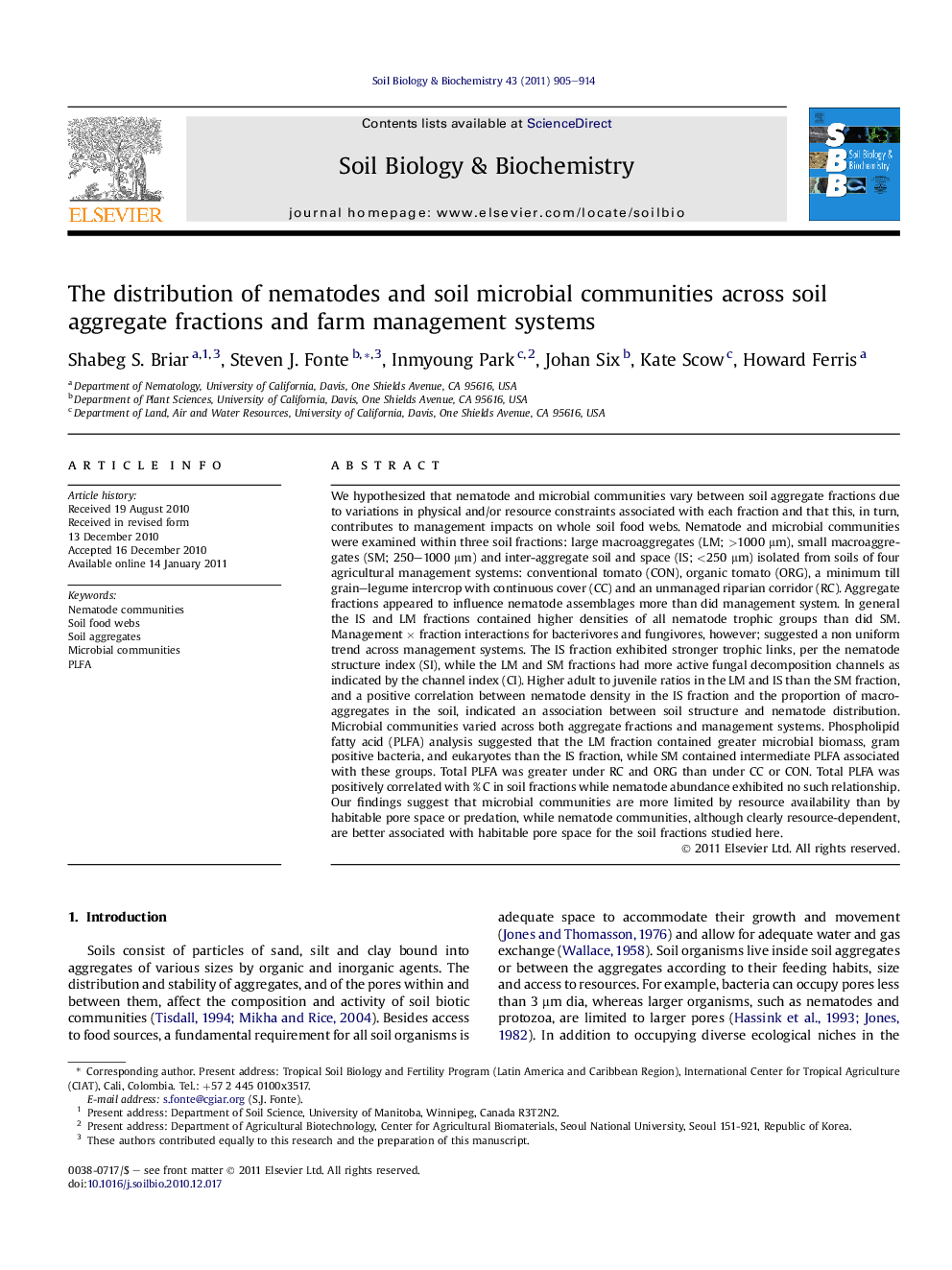| Article ID | Journal | Published Year | Pages | File Type |
|---|---|---|---|---|
| 2025509 | Soil Biology and Biochemistry | 2011 | 10 Pages |
We hypothesized that nematode and microbial communities vary between soil aggregate fractions due to variations in physical and/or resource constraints associated with each fraction and that this, in turn, contributes to management impacts on whole soil food webs. Nematode and microbial communities were examined within three soil fractions: large macroaggregates (LM; >1000 μm), small macroaggregates (SM; 250–1000 μm) and inter-aggregate soil and space (IS; <250 μm) isolated from soils of four agricultural management systems: conventional tomato (CON), organic tomato (ORG), a minimum till grain–legume intercrop with continuous cover (CC) and an unmanaged riparian corridor (RC). Aggregate fractions appeared to influence nematode assemblages more than did management system. In general the IS and LM fractions contained higher densities of all nematode trophic groups than did SM. Management × fraction interactions for bacterivores and fungivores, however; suggested a non uniform trend across management systems. The IS fraction exhibited stronger trophic links, per the nematode structure index (SI), while the LM and SM fractions had more active fungal decomposition channels as indicated by the channel index (CI). Higher adult to juvenile ratios in the LM and IS than the SM fraction, and a positive correlation between nematode density in the IS fraction and the proportion of macroaggregates in the soil, indicated an association between soil structure and nematode distribution. Microbial communities varied across both aggregate fractions and management systems. Phospholipid fatty acid (PLFA) analysis suggested that the LM fraction contained greater microbial biomass, gram positive bacteria, and eukaryotes than the IS fraction, while SM contained intermediate PLFA associated with these groups. Total PLFA was greater under RC and ORG than under CC or CON. Total PLFA was positively correlated with % C in soil fractions while nematode abundance exhibited no such relationship. Our findings suggest that microbial communities are more limited by resource availability than by habitable pore space or predation, while nematode communities, although clearly resource-dependent, are better associated with habitable pore space for the soil fractions studied here.
Research highlights► Nematode and microbial communities differ between aggregate size fractions. ► Microbial communities are more limited by resource availability than aggregate size. ► Nematodes are constrained by both resource availability and habitable pore space. ► Some aggregate pore size effects vary due to differences between management systems.
